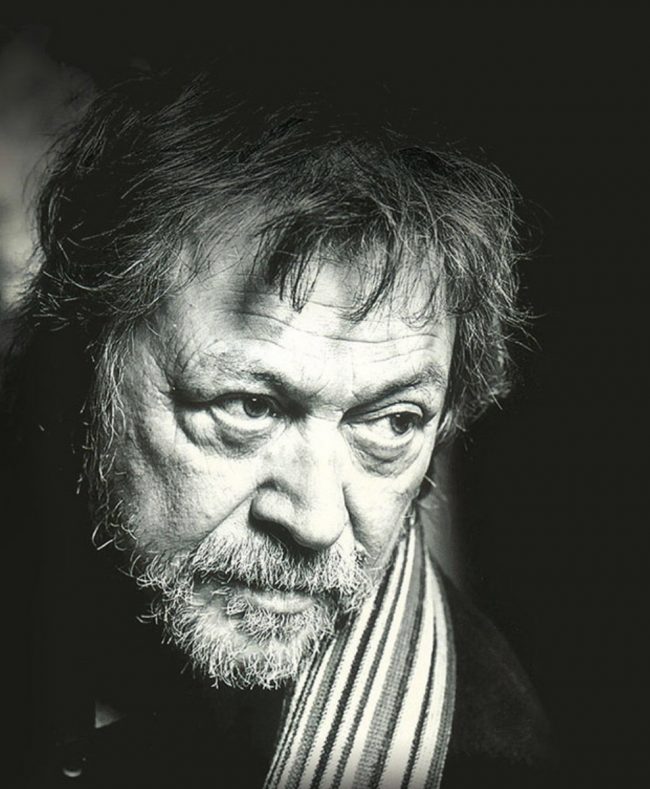Gianni Testa
Pittore e artista contemporaneo
Sono nato a Roma il 23 ottobre 1936, città dove tutt’ora vivo ed opero, nel centro storico, in una casa adiacente alla celebre e celebrata Fontana di Trevi. Conclusi gli studi superiori, mi sono iscritto ai corsi di Architettura presso l’Università La Sapienza di Roma e, nonostante abbia superato a pieni voti il primo biennio, decisi di lasciare per dedicarmi completamente alla fiamma passionale della pittura che sempre più forte ardeva in me.


Frequentati i corsi della scuola di restauro presso la Galleria Borghese, sotto la guida della Prof.ssa Della Pergola, ho studiato ed approfondito le tecniche usate dagli artisti nelle varie epoche per interpretare attraverso la raffigurazione della realtà quei sentimenti e quelle emozioni che non poco mi affascinavano, tanto che per altri dieci anni mi sono dedicato quasi completamente al restauro, dal quale venni fuori profondamente motivato per le mie nuove necessità espressive.
Lasciai ormai maturo anche lo studio di questa tecnica per dedicarmi agli studi di scultura sotto l’egida del Maestro Bartolini.
In quel periodo conobbi e frequentai gli artisti Quaglia, Levi, Guttuso, Calabria e più tardi Pericle Fazzini, con i quali diventai amico. E proprio Levi, che vedendo nelle mie prime opere un certo autentico talento, per il quale si distingue l’artista dal pittore, nel 1962 mi sollecitò a partecipare ed esporre in collettiva insieme con Quaglia, Guttuso, Mazzacurati e Domenico Purificato. L’interesse con il quale la critica nazionale accolse i miei primi dipinti, oltre che le mie sculture, mi stimolò a proseguire con caparbia tenacia la strada intrapresa, che si rivelerà nel corso degli anni piena di sacrifici e rinunce ma anche colma di successi e di traguardi brillantemente superati.
Molti sono stati infatti i premi fin qui conseguiti, le rassegne collettive d’arte cui ho partecipato, dalla Biennale Romana (sin dal 1968) alla Triennale di Milano e alla Quadriennale di Roma (sin dal 1975), solo per citarne alcuni, e altrettanti i concorsi nazionali vinti, partendo dal 1° Premio al Concorso “Brandy Italiano” del lontano 1970, fino al recente Premio alla Carriera consegnatomi dal critico d’arte Prof. Vittorio Sgarbi. Molte sono state le mostre in questi ultimi anni, in Italia e all’estero in Germania, Basilea, New York, Philadelfia. L’ultima mia fatica è stata la mostra antologia presso il Complesso del Vittoriano a Roma in settembre – ottobre 2014.
Riguardo la mia arte: si dice che la pittura di Gianni Testa è universalmente conosciuta per i cavalli. Chi dice Gianni Testa pensa subito al “pittore dei cavalli“. Ma la sua arte va oltre questo stereotipo ed è caratterizzata da un cromatismo molto acceso e da figure eteree e turbinose che rimandano a generi pittorici che spaziano dal realismo all’impressionismo.
In particolare è da notare la sua capacità di astrarre le forme dalla massa informe delle pennellate, quasi a estrarre la materia dal caos primordiale.
Gianni Testa
Contemporary painter and artist
I was born in Rome on the 23rd of October 1936, and I still live and work there, in the old town
centre, in a house in the vicinity of the famous and celebrated Trevi Fountain.
As soon as I finished high school, I enrolled in the courses of architecture at the Università La
Sapienza in Rome and, although I passed my first biennium with flying colours, I decided to leave the
university to devote myself completely to the passionate flame of painting, which was burning in
me from strength to strength.


After attending the restoration courses at the Galleria Borghese, under the guide of Professoressa Della Pergola, I have studied and broadened my knowledge of the techniques used by different artists in different art periods, to represent through the depiction of reality those feelings and emotions that fascinated me more than a little, so much that I dedicated myself almost totally to restoration for ten more years, experience from which I emerged deeply motivated for my new expressive needs.
I was already mature when I finished studying also this technique to devote myself to the study of sculpture under the auspices of Maestro Bartolini. In those days I met and spend time with artists with whom I became friends, as Quaglia, Levi, Guttuso, Calabria and later on Pericle Fazzini. And it was Levi who saw an authentic talent in my first works, thanks to which you could tell the artist from the painter, and who urged me in 1962 to take part in a collective exhibition with Quaglia, Guttuso, Mazzacurati and Domenico Purificato. The interest with which the national critics welcomed my first paintings, as well as my sculptures, encouraged me to continue with stubborn tenacity along this path, which over the years would turn out to be full of sacrifices and hardships but also of achievements and targets exceeded.
Many are indeed the awards I was given so far, the collective exhibitions I have taken part in, starting from the Biennale Romana (since 1968), to the Triennale di Milano and the Quadriennale di Roma (since 1975), to name a few, and just as many are the national competitions I won, starting from the first prize at the “Brandy Italiano” as far back as 1970, up to the more recent Premio alla Carriera (career achievement award) which I received from the art critic Professor Vittorio Sgarbi. There have been many exhibitions in the recent years, in Italy and abroad in Germany, Basel, New York, Philadelphia. My last effort has been my anthologic exhibition at the Vittoriano in Rome in sept-oct. 2014.
